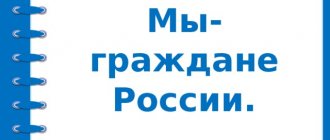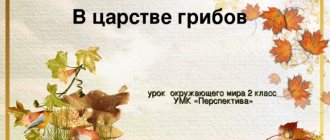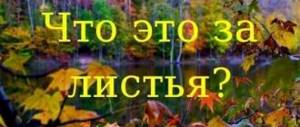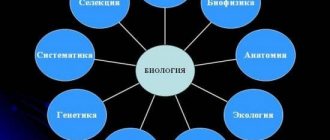Download material
so UNT / Lesson developments / Lessons in Mathematics
Summary for the mathematics lesson “The unit of mass is the kilogram” 1st grade
02/23/2015 6890 817 Kozlova Alla Ivanovna
Pedagogical goal:
create conditions for familiarization with the unit of measurement of mass - the kilogram; development of numeracy skills; consolidation of knowledge of the terms “command”, “sum”.
Planned results (subject):
know the unit of measurement of mass - kilogram; be able to use the terms “command” and “sum”.
Universal learning activities (meta-subject):
Regulatory:
be able to evaluate the results of your work in the classroom.
Communicative:
be able to listen and engage in dialogue, participate in collective discussion.
Cognitive:
be able to apply mathematical knowledge to solve educational and practical problems, use mathematical terminology when composing and reading mathematical equalities.
Personal:
participate in the organization of the research space.
During the classes
I. Calligraphic minute.
7 6 5 7 6 5
II. Verbal counting. What number is missing?
| 6 + = 9 + 4 = 7 | 7 + = 10 8 – = 3 |
III. Learning new material.
1. Preparation for the perception of new material.
– Take the textbook in one hand, the notebook in the other. What's heavier?
Then students take in one hand, for example
, a pen, in the other - an eraser (or any two objects that are close in weight).
-Which is easier? How do you know which object is lighter and which is heavier?
– Can a ruler help us with this? Why?
– What device is used to measure the mass of objects?
2. Introduction to the unit of measurement of mass - the kilogram.
The teacher demonstrates the scales, shows how to balance the scales, explains that if one object is heavier than another, then the scale pan will fall lower than the cup on which the lighter object lies.
Then the different objects are compared by mass.
– You, of course, have seen other scales and how objects are weighed on them. Tell us about it.
– One of the units for measuring the mass of objects is the kilogram
.
– Look at the drawing (p. 36 of the textbook). (The first scale (cup) is in equilibrium, the other scale shows that the mass of the object is 1 kg, that the weights shown in the figure weigh 1 kg, 2 kg and 5 kg.)
3. Write and read the mass unit.
– In mathematics, the word “kilogram” is usually written in abbreviation: kg
,
for example:
1 kg, 2 kg, 3 kg, etc.
– Read the entries:
3 kg, 4 kg, 6 kg, 7 kg.
4. Consolidating knowledge of the unit of measurement for the mass of objects.
Work according to the textbook (tasks 1, 2, p. 36).
– Look at the pictures of task 1. Which is easier: a watermelon or a weight? (Watermelon, since the bowl with the watermelon is located higher than the bowl with the weight.)
– Find out the mass of the bag of flour. (3 kg, since on the right pan of the scale there is a weight that weighs 5 kg, and on the left there is a bag of flour and a weight of 2 kg. The scales are in balance, which means that if 2 kg (the mass of the weight) is subtracted from 5 kg), 3 kg will remain - the mass of the bag of flour.)
– How can you weigh 3 kg, 7 kg, 4 kg using weights of 1 kg, 2 kg and 5 kg?
(3 kg: place 1 kg and 2 kg weights on the right side of the scale.
7 kg: Place weights of 2 kg and 5 kg on the right pan of the scale.
4 kg: put a 5 kg weight on the right pan of the scale, and a 1 kg weight on the left (the one on which the object is weighed). 5 kg – 1 kg = 4 kg.)
Work in a notebook (task 2, p. 21).
– What is the mass of the pumpkin? (7 kg.)
How did you find out? (On the right pan of the scale there are weights weighing 5 kg and 2 kg; adding two to five will equal 7 kg. The scales are in balance, which means the mass of the pumpkin is 7 kg.)
– Write down the mass of the pumpkin.
– How do you find out the mass of a melon? (Subtract one from seven, you get six kilograms.)
– Why did you subtract? (Since the mass of a melon is 1 kg less than the mass of a pumpkin.)
– Write down the mass of the melon.
IV. Strengthening numeracy skills.
Students use the table to compose expressions and find their meanings (task 5, p. 37 of the textbook).
The first term is 6, the second term is 2, the value of the sum is 8.
The value of the sum is ten, the first term is seven, the second term is three.
The value of the sum is eight, the second term is three, the first term is five. Etc.
Students orally (with a detailed explanation) solve expressions from task 4 (p. 37 of the textbook), and then independently (followed by self-test from the checklist) complete task 3 (p. 21 of the notebook).
V. Working with geometric material
(p. 37 of the textbook).
In task 3, students measure the length of the segments and determine how many centimeters the pink segment is longer than the blue one.
In task 7, students must find a “cut out” figure using ingenuity. Answer:
figure number 3.
VI. Work on developing observation skills and logical thinking
(task 6, p. 37 of the textbook)
. Solution:
| Cut into salad | 7 | 6 | 5 |
| Left | 1 | 2 | 3 |
VII. Lesson summary.
What new did you learn in the lesson? What particularly interested you? What else would you like to accomplish? What is your role in the lesson?
See the downloadable file for the full text of the material.
The page contains only a fragment of the material.





